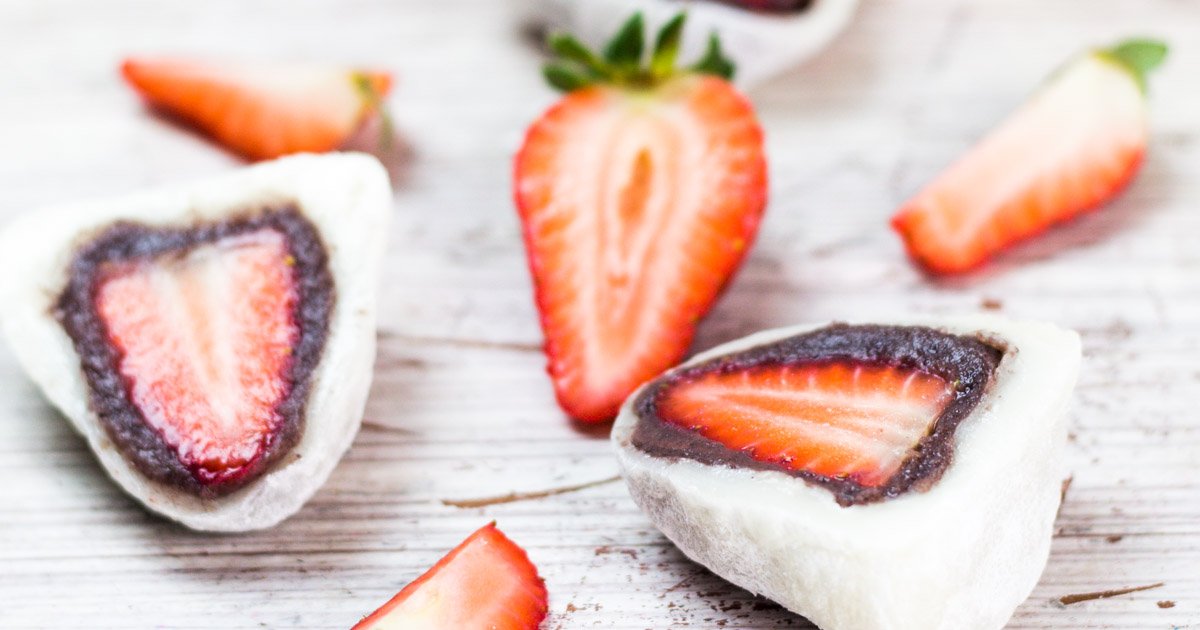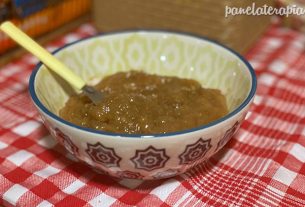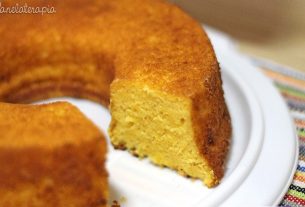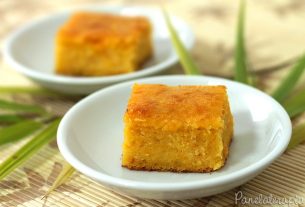A few days ago I decided to do Anko (adzuki bean paste) one of the main fillings in Asian confectionery in general and very present in traditional Japanese (wagashi). It is possible to eat it plain, but the real reason for this was: Ichigo Daifuku.
That overwhelming desire to eat the Ichigo Daifuku which is a cupcake filled with anko and strawberry. It’s a different combination, but it’s very decorative… a lot! It’s sweet enough, has the acidity of strawberries and chewiness (gummy? chewy?).
A massa do mochi, the rice cake, is made with the grace of technology! Yes, I actually used a microwave. And you can stop judging me. I asked the great Oracle and saw several 100% asian doing it the same way.
The traditional way uses Asian rice (Oryza sativa was. glutinous) as a starting point. After steaming, it is pounded in wooden pestles. From the historical and traditional concept it is super beautiful, but in modern life it is impractical.
Despite the name being glutinous, has no relation to gluten. Rice does not naturally contain gluten, but can suffer from cross-contamination if processed in cereal factories that do.
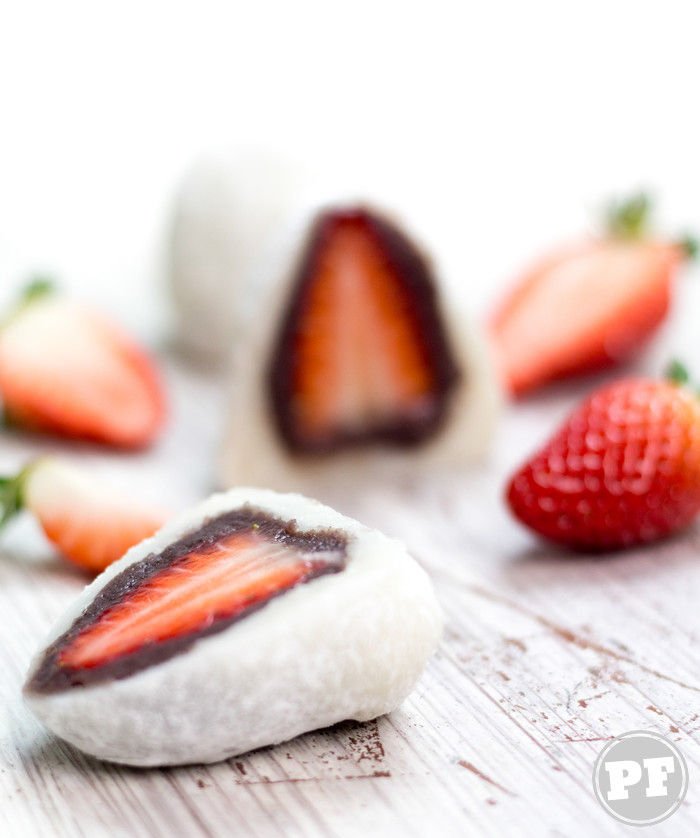

Therefore, flour from this specific rice is generally used, which makes the process much easier. And when you add the incredible microwaves it becomes even easier. If you don’t like microwaves, I would suggest trying to understand them before spreading misconceptions about this non-ionizing electromagnetic radiation! The maxim is: we try the unknown, right?
O mochi it needs to be made with this specific rice or its flour. Our Brazilian rice (or Italian risotto rice) is not suitable, as their chemical composition is different. In general, the proportion of polysaccharides that make up rice is different. Therefore, the characteristics are not the same.
Ichigo Daifuku Mochi: Japanese Strawberry Jam
Makes: 6 units
- 150 g azuki bean paste (anko)
- 6 strawberry (clean and sanitized)
- 100 g glutinous rice flour (sweet rice flour)
- 20 g crystal Sugar
- 150 mL water
- maize starch (or potato starch; sprinkle)
1 cup: 250mL | 1 tablespoon: 15mL.
- Divide the anko into 6 equal pieces (~25g). Cut the green part of the strawberry (peduncle and sepal), dry them.
- Wrap each strawberry with the anko, covering well. Reserve in the refrigerator.
- In a microwave-safe bowl, mix the rice flour, sugar and water. Stir to avoid leaving any lumps.
- Cover with plastic wrap, leaving a small opening to let excess steam escape. Place in the microwave at 700W for 1 minute (this is my maximum power). Remove and mix well. It will be necessary to take 1 or 2 more times, each for 30 seconds. Always stirring. If your microwave is more powerful, do it every 15 seconds and always stir these times.
- The dough transforms from completely opaque to translucent. And on the palate, it no longer has the taste of raw rice.
- In a baking dish sprinkled with cornstarch (or potato starch), place the hot rice dough and sprinkle more starch. The dough really sticks.
- Roll out the dough with your hands until it is ~0.5cm thick. Wait for 5 minutes to cool.
- Divide the dough into two equal halves. Each piece in three. In the end, you will have 6 smaller pieces.
- Open each piece into a disc shape, you may need to add more starch. The disc must be between 8-10cm (diameter).
- With a brush remove excess starch.
- Wrap each covered strawberry with this rice dough disc, joining the ends at the base. Pinching well to stick. Repeat the process with all the strawberries.
- Consume immediately.
- Glutinous rice flour: the term glutinous does not refer to gluten, in this case, but to rice which is naturally gummy (high amounts of amylopectin). It is a general feature in several types of Asian rice. For this recipe, the rice flour needs to be made from this type of rice. Rice flour is available on the common market, but it is not made with this variety. This type of flour is generally found in Asian/Oriental food stores.

Sign up for our newsletter and stay up to date with exclusive news
that can transform your routine!
Warning: Undefined array key "title" in /home/storelat/public_html/wp-content/plugins/link-whisper-premium/templates/frontend/related-posts.php on line 12
Warning: Undefined array key "title_tag" in /home/storelat/public_html/wp-content/plugins/link-whisper-premium/templates/frontend/related-posts.php on line 13

